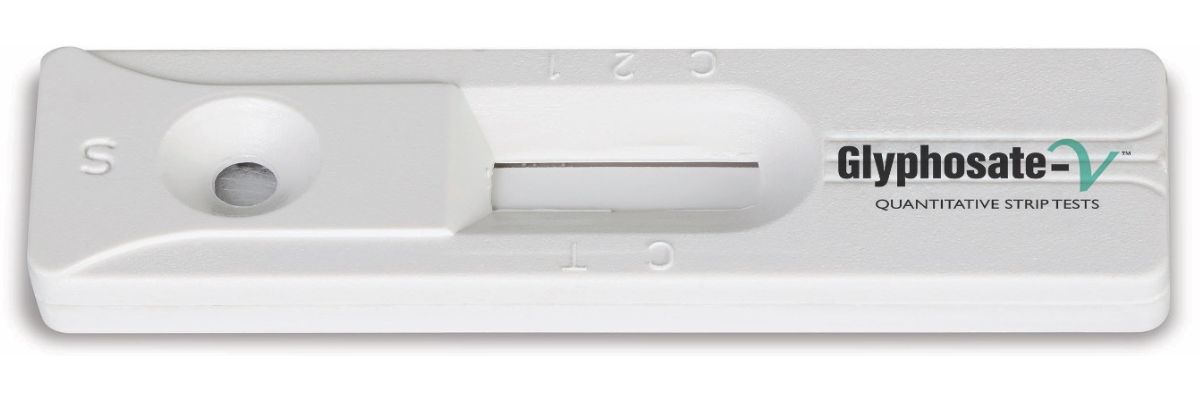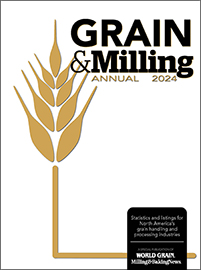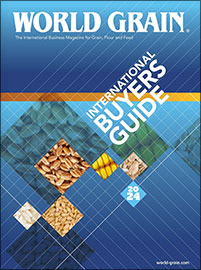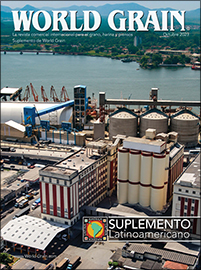My colleague, Nancy Collette, found herself in an interesting situation recently, requiring the help of a professional to remove an invasive colony of bamboo which had begun to overtake grass and other native and ornamental plants in her back yard. Bamboo comes in several varieties, each with unique growth habits – and Nancy’s was a runner. Runner bamboo can produce extensions from a rhizome root system, giving it a stubborn propensity to spread across yards, fields and forested areas if left unchecked.
 Nancy Collette/Credit: ©WATERS CORPORATION - TERRY LOUISON
Nancy Collette/Credit: ©WATERS CORPORATION - TERRY LOUISONWhat does bamboo have to do with mycotoxins and glyphosate? As it turns out, Nancy’s experience confronting an invasive bamboo variety would provide insights into a problem grain and other crop producers face as they begin each season: weeds. According to most definitions, a weed is simply a plant that is growing in the wrong place at the wrong time. For crop producers, weeds can quickly outcompete high value crops for resources, such as water, nutrients and even sunlight. Managing the presence of unwanted vegetation becomes crucial, especially during growing seasons where water or nutrients are scarce.
An expert in mycotoxin testing for grains, feeds and other staple food and agricultural products – Nancy decided to bring in an expert who could help her to address the runaway bamboo growth in her yard. Through her experience, Nancy would come to better understand the challenges faced by grain producers as they work to reduce risks, improve crop yields and ultimately meet the global demand for abundant, safe and nutritious food.
A Complex Concern
Herbicides are often selected for farming applications because of their proven ability to control the growth of unwanted vegetation, while supporting higher yields for agricultural crops. However, long term use may carry the risk of plants developing resistance to a particular herbicide, resulting in the need to increase its concentration for the same effect. Producers must also be concerned with molds and mycotoxins, a perennial issue for grain, nut and other food crops worldwide.
Collette also noted, “Recent studies have shown the presence of mycotoxins to be higher than originally thought – often with single commodities containing more than one type of toxin. Toxic at very low concentrations, and resistant to heat and other processing condition, mycotoxins are extremely difficult to manage once they appear in a storage or manufacturing environment.” The rise in preventive initiatives such as the Food Safety Modernization Act (FSMA), signed into US law in 2011, places greater responsibility on the industry to identify, measure and prevent the introduction of contaminated products to the food supply.
Where mycotoxins and herbicides differ is in the route they take getting into a field, orchard or vineyard. Herbicides are chemicals that are applied for agronomic purposes, often with measurable benefits to the producer, whereas mycotoxins are deposited by soil-borne molds which grow and turn on metabolic pathways resulting in toxin production. However, the presence of mycotoxins is much less predictable than herbicides and other chemicals applied to crops. Mycotoxins tend to follow severe weather patterns such as drought, or find an entry point when insect or mechanical damage have occurred.
“Whether we are dealing with an approved herbicide or an unexpected mycotoxin, grain handlers must find ways to quickly identify and measure how much contamination might be present. In some cases, alternative markets are available for higher mycotoxin contamination levels, and early detection enables grain merchandisers to act quickly to find alternative markets, plan for mitigation strategies or reject shipments that do not meet their quality standards. New technologies are available that enable immediate access to sensitive, accurate results in a matter of minutes. The value of early detection is most visible at harvest when grain is first moving from the field to the handling facility or processor.”
 Credit: ©WATERS CORPORATION - IAN HANSLOPE
Credit: ©WATERS CORPORATION - IAN HANSLOPEEarly Detection: Essential Checkpoints To Ensure Compliance
Glyphosate and mycotoxins tend to be present at extremely low concentrations in grain, food and feed products. For this reason, diagnostic test kits are designed using antibodies, which act as magnets with the ability to attract and hold onto one (and sometimes a group of) molecule, or chemical, in a specific sample which may be taken from a truck or rail car at point of receival.
Collette added, “Grain elevators and processing facilities can successfully test and track high risk suppliers and geographic regions and make decisions around raw materials acceptance based on data from a 5-minute rapid test for aflatoxin, fumonisin, vomitoxin (DON), or a combination of up to six mycotoxins with one sample. Grain quality managers are able to obtain numeric results for glyphosate in corn, wheat, milo, oats and other products in just 15 minutes using a lateral flow strip test. What is most exciting is that mycotoxins and glyphosate can be monitored using the same, low-cost approach.”
The value of early detection lies in the ability of grain handlers to make decisions on the spot, preventing the introduction of contaminated raw materials before they can enter storage or processing. With new technologies coming available that serve this need, along with data handling and sharing across organizations, rapid testing is quickly advancing to fill the need for true quality management across the grain sector worldwide.
Whether the issue is invasive weeds in a garden or crop field, or unexpected mycotoxins in an otherwise high value crop, industry leaders will continue to request technologies that rise to meet their needs. It is our mission to meet that need.
Sources:
Worldwide contamination of food-crops with mycotoxins: Validity of the widely cited 'FAO estimate' of 25; Mari Eskola 1, Gregor Kos 2, Christopher T Elliott 3, Jana Hajšlová 4, Sultan Mayar 2, Rudolf rska 1 3;Affiliations expandPMID: 31478403;DOI: 10.1080/10408398.2019.1658570; https://pubmed.ncbi.nlm.nih.gov/31478403/





